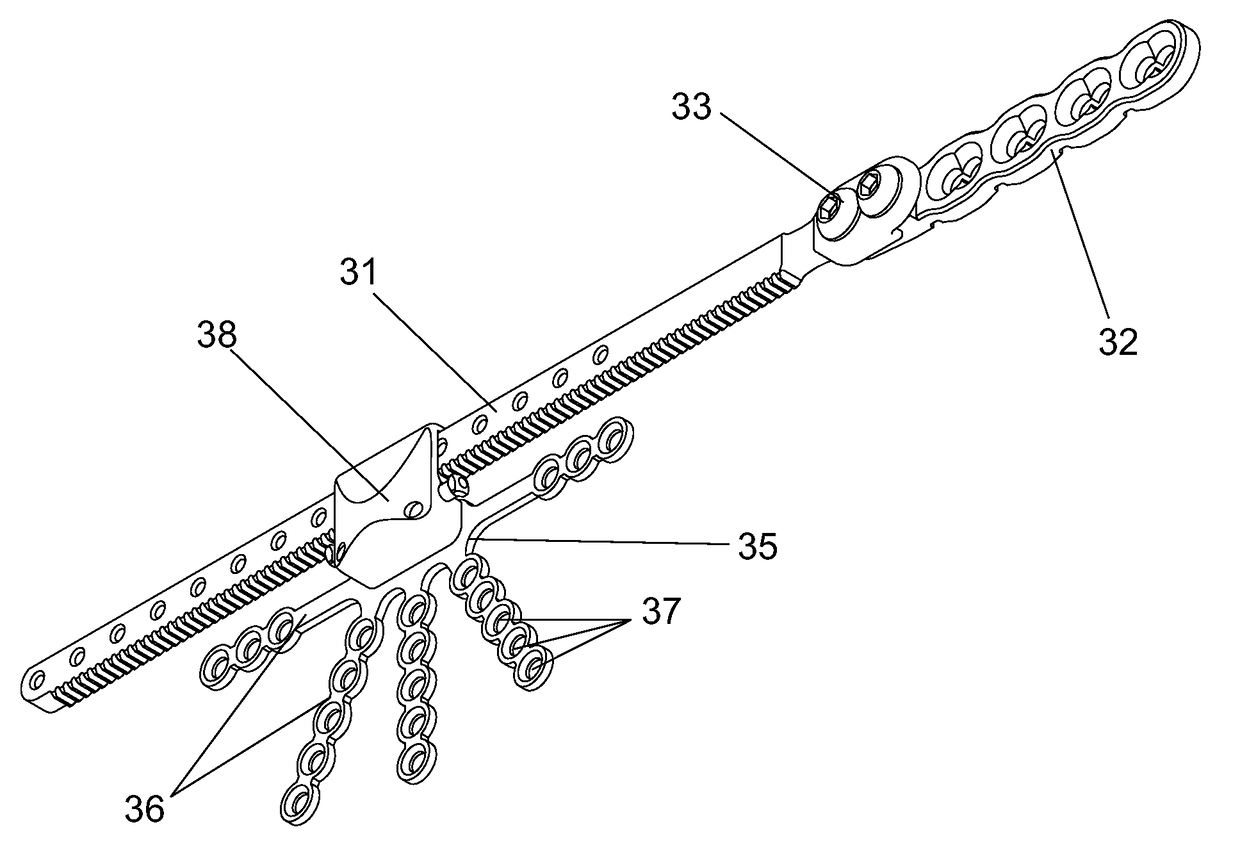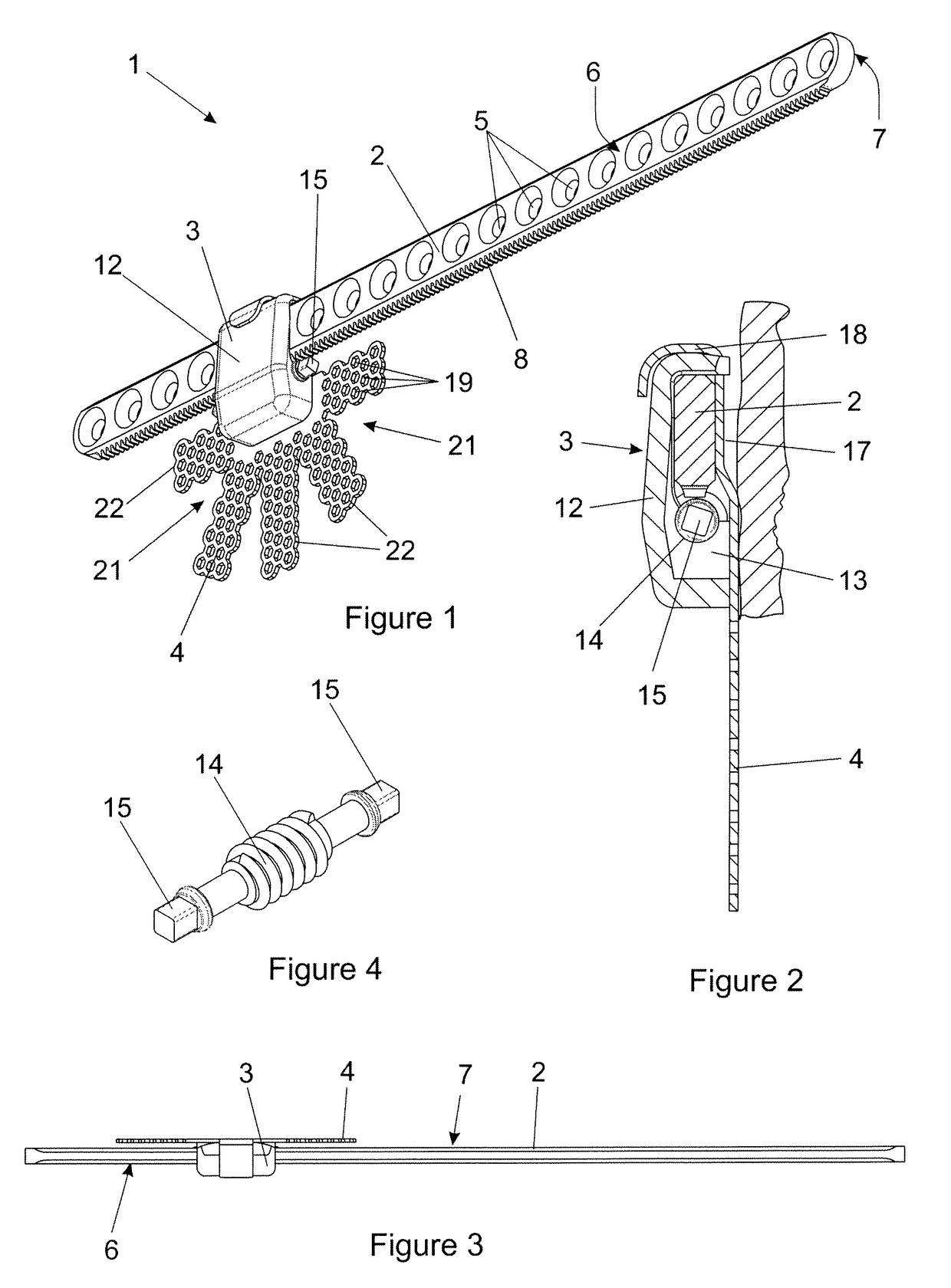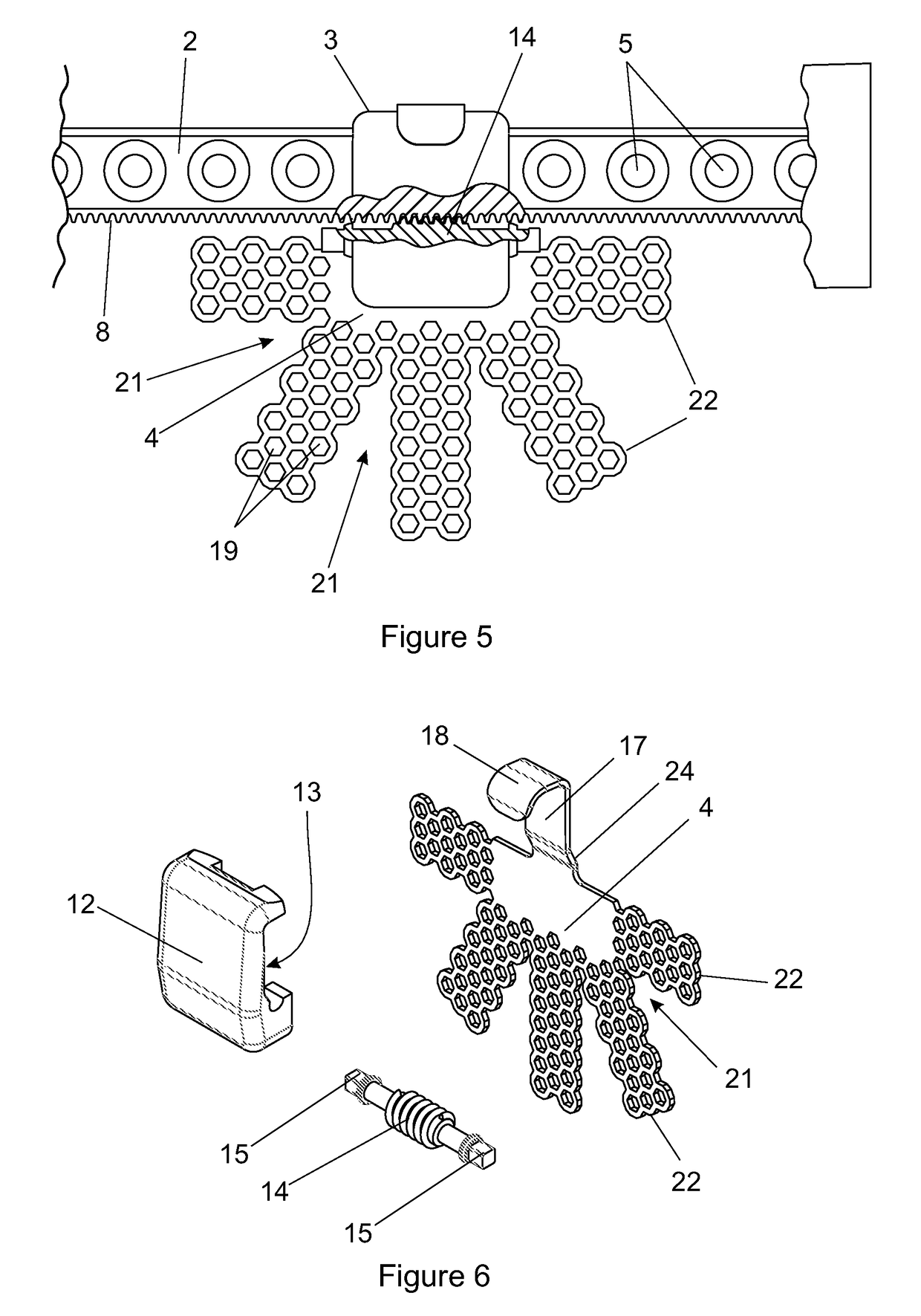Transport distraction apparatus
a technology of transport distraction and apparatus, applied in the field of osteogenesis, can solve the problems of significant donor site morbidity, large maxillectomy defect reconstruction after tumour resection, and the inability of most existing maxillofacial transport distractors to be practically suited to distraction
- Summary
- Abstract
- Description
- Claims
- Application Information
AI Technical Summary
Benefits of technology
Problems solved by technology
Method used
Image
Examples
Embodiment Construction
[0038]As illustrated in FIGS. 1 to 7 of the accompanying drawings, one embodiment of transport distraction apparatus (1) according to the invention, hereinafter referred to as “the distractor”, includes a track (2) with a carriage (3) movable along at least a central part of its length wherein the carriage carries a perforated or mesh fixation plate (4). The track (2) is of a type generally known in the art and assumes the form of a titanium strip having a plurality of apertures (5) roughly centrally located with respect to the width of the track and spaced apart along its length. The apertures are suitable for receiving fasteners for securing the track directly to the bone of a patient. The track is such that it may be bent to take on a suitable curvilinear shape in use as shown quite clearly in FIG. 15.
[0039]The width of the track is greater than its thickness to provide a front face (6) and a rear face (7) (see FIGS. 2 and 3) with two longitudinally extending edges. In the presen...
PUM
 Login to View More
Login to View More Abstract
Description
Claims
Application Information
 Login to View More
Login to View More - R&D
- Intellectual Property
- Life Sciences
- Materials
- Tech Scout
- Unparalleled Data Quality
- Higher Quality Content
- 60% Fewer Hallucinations
Browse by: Latest US Patents, China's latest patents, Technical Efficacy Thesaurus, Application Domain, Technology Topic, Popular Technical Reports.
© 2025 PatSnap. All rights reserved.Legal|Privacy policy|Modern Slavery Act Transparency Statement|Sitemap|About US| Contact US: help@patsnap.com



